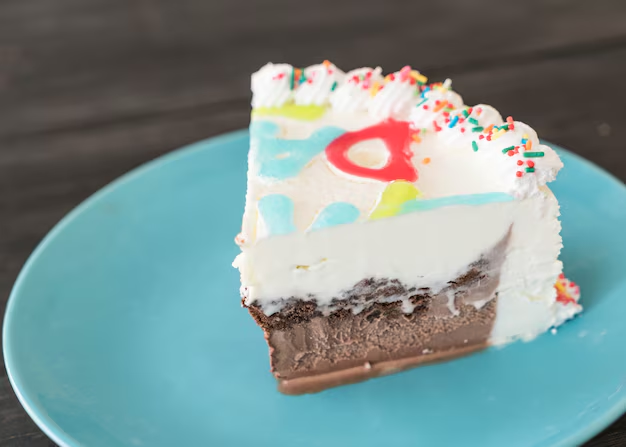How to Make Your Cake Last Longer in the Refrigerator
When you have a delicious cake, you naturally want to make it last as long as possible. But how long can your sweet treat really survive in the refrigerator before it loses its freshness or, worse, becomes unsafe to consume? Let’s dive into the detailed world of cake storage, exploring how you can maximize your cake's shelf life while maintaining its taste and quality.
🎂 Understanding Cake Shelf Life
The Basics of Cake Storage
To keep a cake fresh, especially one stored in the refrigerator, understanding its ingredients is vital. Generally, cakes are made from perishable items like eggs, milk, and sometimes cream cheese, which impacts how long they stay fresh. Moreover, the design of the cake—whether it's frosted or unfrosted—also plays a part.
General Guidelines
Here's a quick guide to help you estimate how long different types of cakes last in the refrigerator:
- Unfrosted Cakes: Typically last about 3-5 days.
- Frosted Cakes: Can remain fresh for up to a week depending on the frosting.
- Fondant Cakes: Generally good for about a week.
- Cheesecakes and Cakes with Dairy Frosting: Best consumed within 3-4 days.
For these durations to be applicable, cakes should be properly stored and covered.
🥄 The Role of Different Ingredients
How Ingredients Affect Cake Longevity
The ingredients in a cake significantly influence its shelf life:
- Butter-Based Cakes: Tend to last longer than oil-based cakes when refrigerated.
- Cream Cheese and Dairy Frostings: Can shorten the shelf life as they are more perishable.
- Nuts and Fruits: Fruit fillings or nut toppings may affect freshness by releasing moisture.
Practical Storage Tips by Ingredient
To maximize your cake’s freshness, consider:
- Use Airtight Containers: This is essential for cakes with dairy-based frostings.
- Plastic Wrap: Use it to tightly cover unfrosted cakes to prevent them from drying out.
- Refrigerate Quickly: Minimize the time creams and dairy products are left at room temperature.
🍰 Storing Different Cake Types
When & How to Refrigerate
While refrigeration is a common method for prolonging cake shelf life, not all cakes require cold storage:
- Avoid Refrigerating Sponge Cakes: They can dry out quickly. Instead, consume them soon after baking, or use airtight containers at room temperature for short durations.
- Always refrigerate cakes with fresh fruit or whipped cream toppings immediately after serving.
Special Cases: Wedding and Specialty Cakes
For large cakes like wedding or specialty cakes:
- Freeze Leftovers: If you have lots left over, consider freezing. Be sure to double wrap cakes with plastic and foil.
- Keep Decorations Safe: Fondant-covered cakes should be refrigerated if they include perishable elements, but ensure decorations remain intact by placing them in a cake box.
🍽 Practical Tips for Cake Lovers
Ensuring Your Cake Tastes Fresh
Preserving the taste and texture of your cake deserves attention:
- Let the Cake Sit at Room Temperature Before Serving: This can enhance flavors and soften textures, especially after refrigeration.
- Use Silica Gel Packs: Placing these in airtight containers can help absorb excess moisture.
- Serve Small Slices: To reduce exposure to air and bacteria during storage, cutting smaller pieces when serving limits leftover exposure.
🎉 Maximizing Layers and Quality
Tips for Layered Cakes
Layered cakes, often elaborate with fillings and rich creams, need special care:
- Stabilize Frostings: Use stabilizers in whipped cream frostings to maintain texture.
- Separation Helps: Consider separating layers pre-storage and reconstructing when ready to serve for fresher presentation.
🗒️ Visual Summary: Quick Tips for Storing Cake
🕒 Quick Reference for Cake Storage Durations:
| Cake Type | Refrigerator Shelf Life 🍰 |
|---|---|
| Unfrosted | 3-5 days |
| Frosted | 5-7 days |
| Fondant | Up to 1 week |
| Cheesecake & Dairy Frosted | 3-4 days |
Top Cake Storage Tips:
- Use Airtight Containers 🥡: Preserve moisture and prevent drying.
- Plastic Wrap 📦: For unfrosted treats, keep them tightly wrapped.
- Freezing: Great for leftovers—ensures prolonged freshness.
Emojis break up dense information, making it easier to digest!
🎈 A Fresh Takeaway
Storing cake effectively is both an art and a science of understanding what keeps your favorite dessert both tasty and safe to consume. Improper storage can quickly turn a delightful treat into a disappointment, so knowing how to handle different types of cakes and ingredients ensures you're always enjoying them in their best state.
By following these insights and storage methods, you can truly extend the enjoyment of your cakes without sacrificing quality. Remember, a little attention to detail today can mean a lot more cake enjoyment tomorrow!
